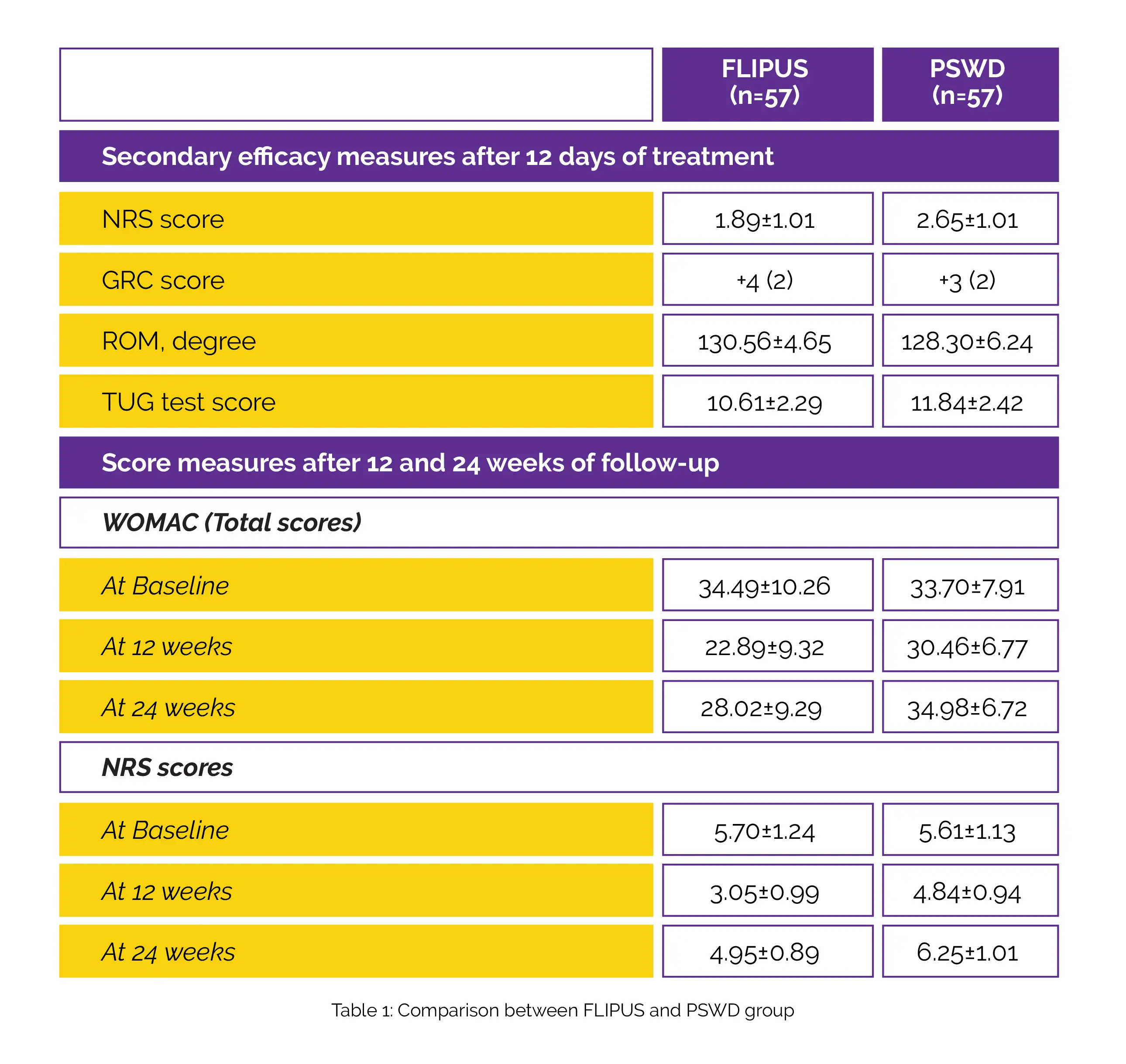Categories
Change Password!
Reset Password!


A randomized comparative prospective trial aimed to evaluate the safety and effectiveness of focused low-intensity pulsed ultrasound (FLIPUS) compared to pulsed shortwave diathermy (PSWD) for knee osteoarthritis.
Focused low-intensity pulsed ultrasound has a good safety profile and is more effective in treating knee osteoarthritis patients' health state, pain, and dysfunction in the short term than pulsed shortwave diathermy.
A randomized comparative prospective trial aimed to evaluate the safety and effectiveness of focused low-intensity pulsed ultrasound (FLIPUS) compared to pulsed shortwave diathermy (PSWD) for knee osteoarthritis.
A total of 114 individuals with knee osteoarthritis were randomly segregated to either FLIPUS or PSWD therapy. Western Ontario and McMaster Universities Osteoarthritis Index (WOMAC) total score change from baseline was the major endpoint ascertained. Global rating of change (GRC) scale, active joint range of motion (ROM) test, numerical rating scale (NRS) for pain assessment, and time up and go (TUG) test were the secondary endpoints ascertained. At baseline, 12 days, 12 weeks, and 24 weeks, data was gathered.
At 12 days, subjects who were given FLIPUS therapy showed remarkable improvements in their WOMAC total scores when compared to subjects getting PSWD therapy (mean difference, - 10.50, Figure 1).

Less pain and improved physical function and health status were reported in individuals treated with FLIPUS contrasted to those treated with PSWD at 12 days, according to the findings of the GRC scale, ROM test, TUG test, and NRS. The WOMAC total scores and NRS scores of the subjects in the FLIPUS group also improved significantly at 12 weeks (mean difference, - 7.57 and - 1.79, respectively) and 24 weeks (mean difference, - 6.96 and - 1.37, respectively), as depicted in Table 1:

During and after the interventions, no adverse events were reported in either group.
Both FLIPUS and pulsed SWD were safe treatment options, although FLIPUS showed superiority to PSWD in terms of pain relief, functional improvement, and health status betterment among people with knee osteoarthritis.
Scientific Reports
Efficacy and safety of focused low-intensity pulsed ultrasound versus pulsed shortwave diathermy on knee osteoarthritis: a randomized comparative trial
Lang Jia et al.
Comments (0)